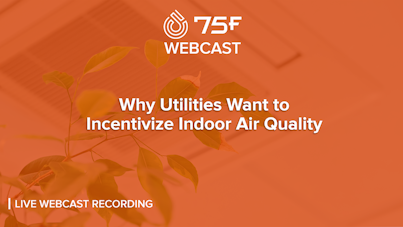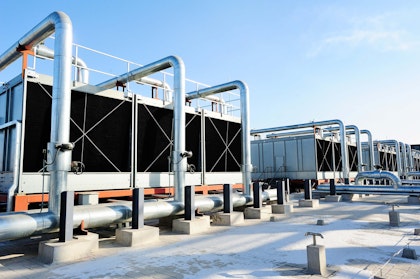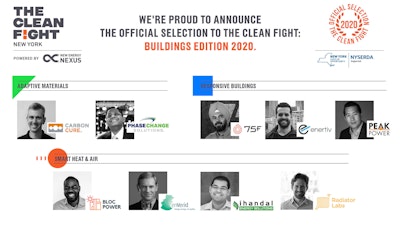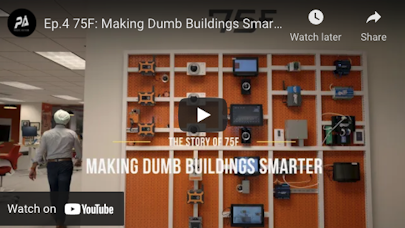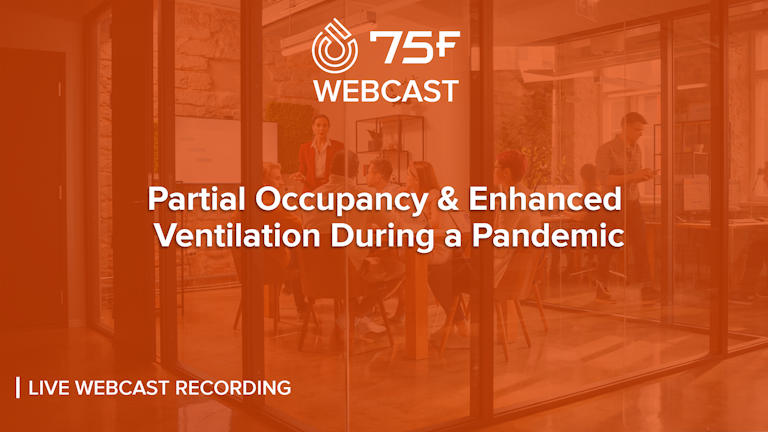
Healthier Buildings Series: Partial Occupancy and Enhanced Ventilation
75F's latest session in the Healthier Buildings webcast series combines expertise from Belimo and Building Automation Monthly to explore strategies for returning to the workplace while spaces are partially occupied.
Webcast hosts are 75F’s Chief Evangelist, Bob French; Chris Jones, Product Manager of Actuator Solutions at Belimo; and Phil Zito, CEO of Building Automation Monthly.
In this episode, viewers walk through a framework for control changes post-COVID-19, the role of actuators in zone control systems, and efficiency strategies for partially occupied buildings. Webcast viewers also catch a glimpse of early data on utility costs when implementing 75F’s Epidemic Mode, a custom sequence of operations designed to follow CDC & ASHRAE control guidelines.
CDC & ASHRAE guidelines for HVAC control sequences are the foundation of the Healthier Buildings webcast series. Please reference previous sessions for detailed discussions on what these guidelines are and how to implement them in your own respective spaces.
Five-Phase Framework for Control
As commercial building owners prepare to reopen their facility while COVID-19 cases persist across the country, Zito urges them to move through a five-phase framework for control changes:
Assess
Modify
Measure
Control
Validate
In the first phase, facility managers should assess their current building automation system (BAS) to be sure it has the capability to follow industry and medical expert-recommended HVAC sequences.
Assessing your BAS includes gathering documentation – as-builts, system reports – and physical validations to make sure the major air and hydronic systems work. When complete, Zito says, building owners should have a punch list of what does and doesn’t function, as well as a clear picture of what exactly their facilities have.
“I’ve been saying this for a while, that having legacy building automation systems in your building is a risk,” Zito says in the session, “and we’re starting to see that come to fruition as we start to move through reoccupying our buildings.”
In the modify phase, develop a remediation plan to address any lack of proper control and lack of capacity required to follow ASHRAE and CDC guidelines.
Measuring is essential to control theory and is therefore essential to following the guidelines, Zito says. For example, research suggests that maintaining relative humidity (RH) between 40 and 60 percent could be harmful to COVID-19 particles. In order to maintain indoor RH in that range, humidity sensing is a must.
For detailed information on control sequences, please reference previous sessions of the Healthier Buildings webcast series.
Finally, validating will be increasingly important in a pandemic-conscious world. Zito predicts the potential for regulatory compliance around environmental KPIs and compliance reports to avoid liability due to the current tie between human life and environmental safety.
Actuators in Zone Control Systems
The actuator is at the heart of the sequence of operations 75F uses for Epidemic Mode – specifically the actuators on the Variable Air Volume (VAV) terminal unit and the outside air damper. These pieces are essential to redirecting air to occupied spaces in the case of partial occupancy and increasing outside air fractions.
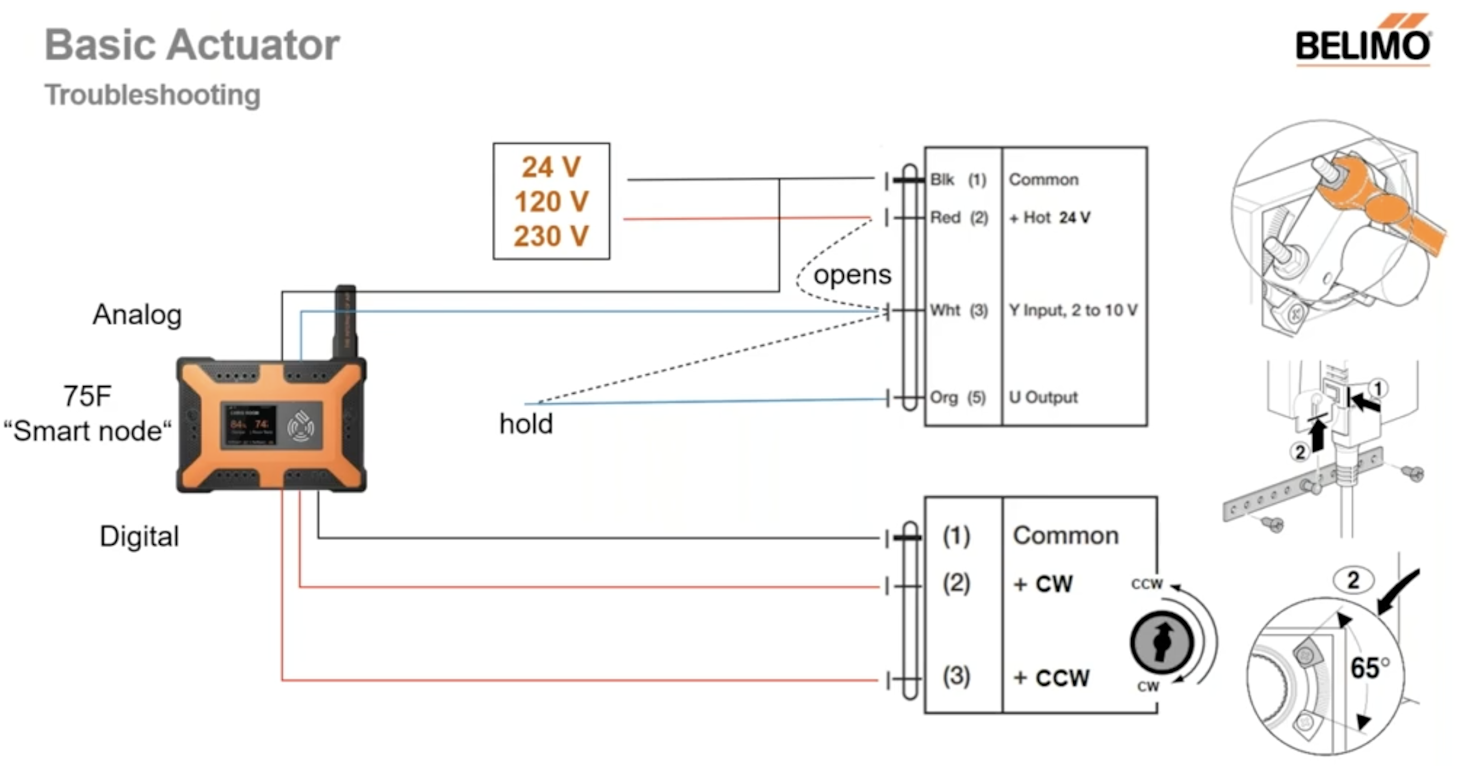
As Zito mentions in this webcast, part of responding to COVID-19 in public indoor environments involves assessing equipment to make sure it functions properly. In this section, Jones pulls on his valuable experience in the field to provide viewers with some practical field tips for assessing actuators.
Every modern actuator today has a universal clamp that fits onto the control shaft. It’s important to make sure this is tight around the shaft, Jones says. To check that an actuator is working correctly, utilize the manual override button or crank to check the smoothness of the damper. Other steps to take include checking if there are mechanical stops, checking for power, and checking the control signal.
If you have an application where you can’t modify the control system, but more ventilation is needed, Jones points out that actuators can help by setting a minimum position.
Partial Occupancy and Redirecting Airflow
Over the long term, 75F predicts that occupancy will increase to full capacity again. However, in the meantime, workplaces may choose to stagger employee presence in offices to maintain some social distancing.
With this in mind, how can facility managers strategically follow expert-recommended control sequences during a pandemic in partially occupied spaces?
Built-in occupancy sensors that track utilization rates are a valuable piece of the solution. With occupancy detection, a building automation system can redirect air to occupied spaces and save valuable energy by not utilizing enhanced ventilation in empty spaces.
Those who have a building automation system without occupancy detection may choose to alternate occupancy of a space to every other day, allowing a 36 to 48-hour period for COVID-19 particles to deactivate. Then, program your building automation system to direct air to the occupied zones by changing the unoccupied zones to setback. For single-zone systems, change schedules to condition occupied spaces.
Live Audience Questions
Viewers are asking valuable questions at every Healthier Buildings session. We've compiled a few questions — and our answers — from this session below.
“Should all damper pneumatic controls be switched out with electronic controls?” — Chris
Absolutely. We believe this is a must if buildings are going to adapt to the changing environment.
Given the current recommendations, this will pay back in less than two years from just the energy perspective. This is going to be the subject of our next webcast, where we have researchers from the National Renewable Energy Laboratory (NREL) presenting data on energy usage with various modes.
“We’re at a school district. How much outside air do you recommend?” — Joan
ASHRAE has provided specific guidance for schools; find that information here.
To follow this guidance, you must have automation for your economizers or other outside air systems. Our solution for this is the 75F Outside Air Optimization application with Epidemic Mode option turned on.
“Any suggestions on portable AC units where the office does not have a ventilation system?” — Ken
Portable AC units are useful to control humidity, but bringing in fresh outside air is essential to dilute the viral load.
“Would a program for cleaning the air periodically with a decontamination service be recommended?” — James
Purging the air in the building is like getting your own decontamination service for the viral load. Using chemicals to purify the air is not a recommended method.
“Are there any codes coming out demanding more conditioned OSA?” — John
The guidance is not directed towards more conditioning, but rather higher fractions of outside air. The guidance is to increase the outside air fraction to as high as can be achieved given the capacity of the unit and indoor environment. The 75F Epidemic Mode is designed to constantly adjust outside air fraction according to this principle.
“Does increasing the air change rate not help to dilute more?” — Celso
The virus can be infectious at very small concentrations. Just recirculating the air without getting in fresh air from the outside and purging the infected air from the building would not dilute the air enough. That is why DCV is recommended to be disabled per the guidelines.
“How do you get mid-sized businesses to take this seriously?” — Mike
The unfortunate reality is that some building owners or business owners are going to care about increasing the safety of guests and occupants and building employee or customer trust, and some are not. We hear almost every day from businesses that are trying to bring people back to work or reduce the risk of shutting down operations, but many more remain silent.
Restaurants and retailers believe that mask use, social distancing, and sanitization are enough, even though repeated studies are proving that they are not. Infection from aerosols remain a huge risk to everyone, large or small.
“If I already have sniffers throughout the facility, do I need to turn off DCV to provide adequate ventilation to reduce the viral load?” — Alvaro
If you are referring to CO2 sensors throughout the building for DCV, you will need to override the DCV so you can have enough ventilation for reducing the viral load. The viral load is more potent than the CO2 concentrations.
“With increasing OA, will building exhaust need to be increased?” — Maurice
Yes, building pressure will increase as OA increases and exhaust fans are required to maintain balance. It is recommended to maintain a slightly positive building pressure to discourage infiltration.
The 75F Outside Air Optimization solution is designed to accomplish these goals and with Epidemic Mode turned on, purging and enhanced ventilation are automatic.
“Regarding measuring the right things, as a proxy for viral loading, don't VOC and CO2 have a rather low correlation to viral load understanding that one person could infect an entire building? Is there a good proxy for viral loading beyond health testing of the occupants?” — David
It is correct to understand that VOC and CO2 levels are not a proxy for a viral load. However, if CO2 or VOC levels are above ambient outside air, this is an indication that ventilation levels could be improved with higher fractions of outside air. There is no proxy for the viral load.


